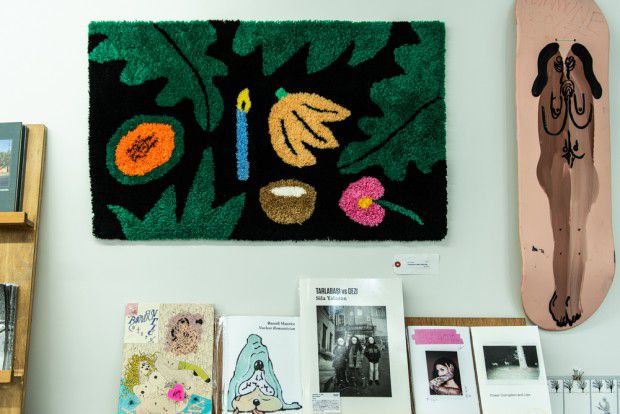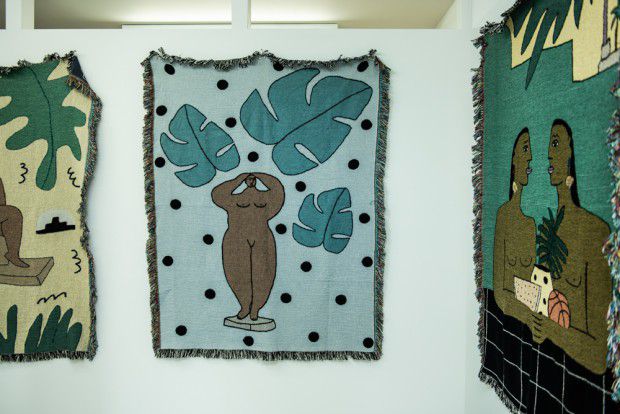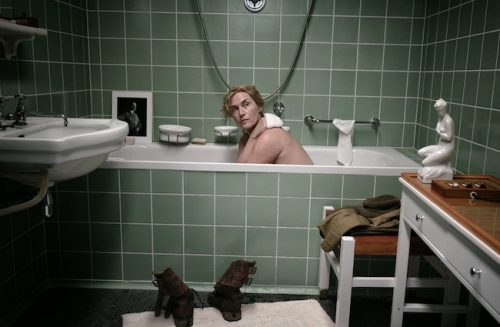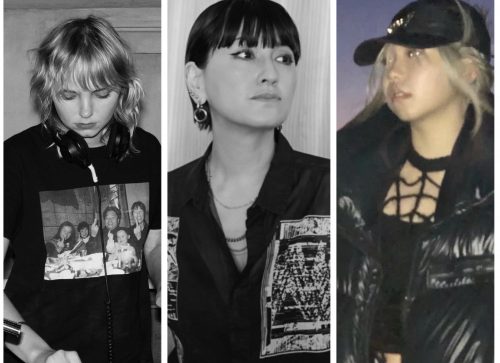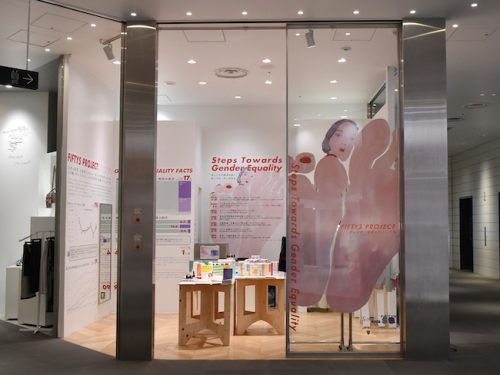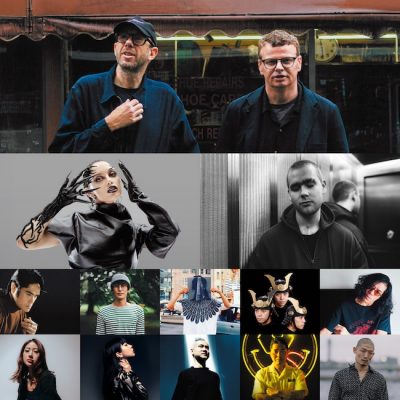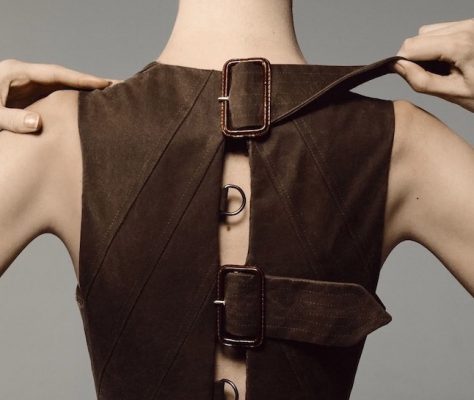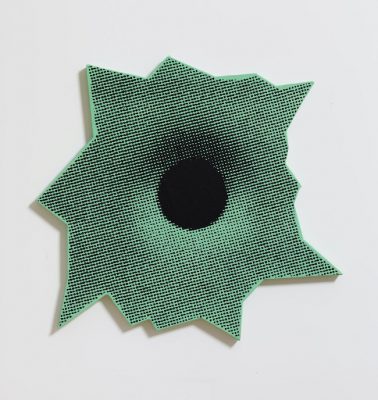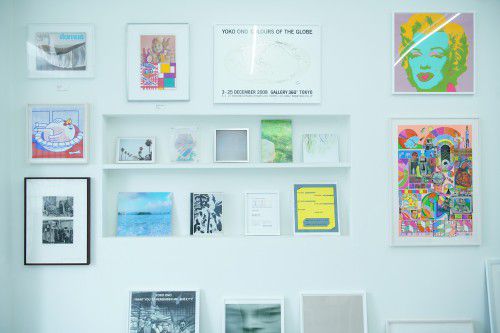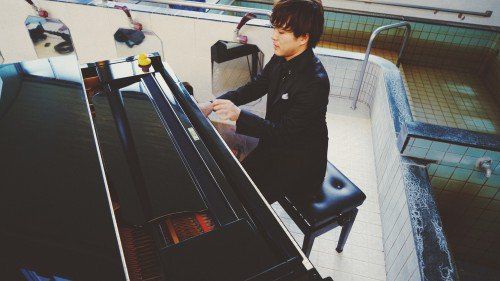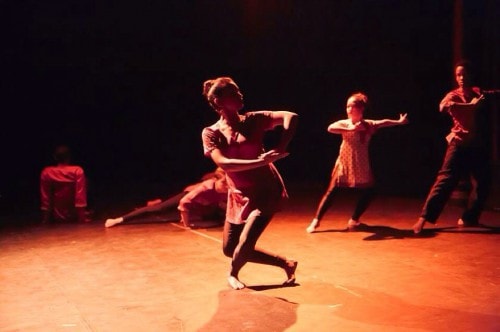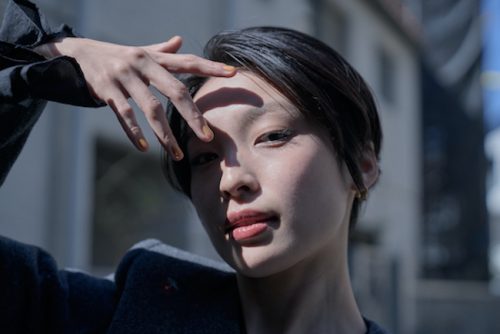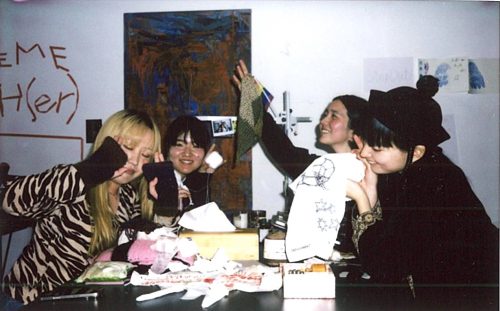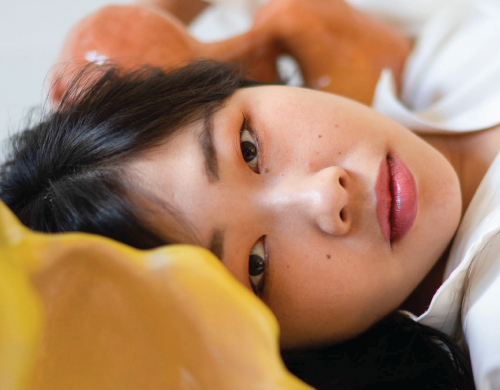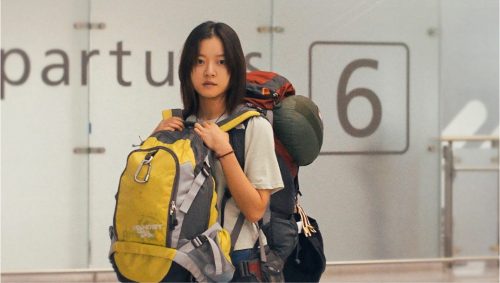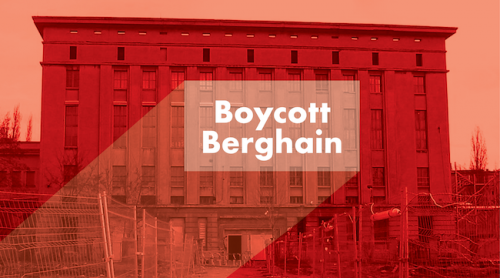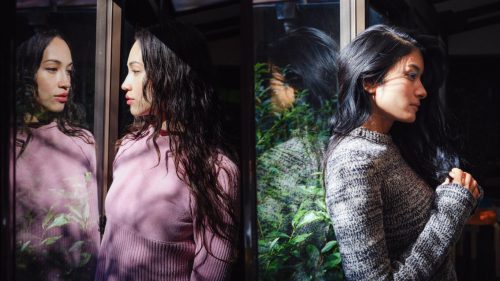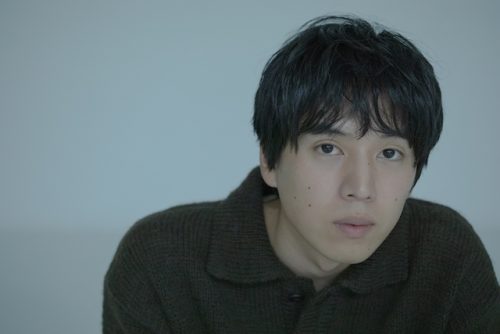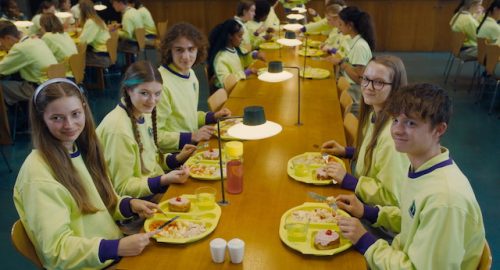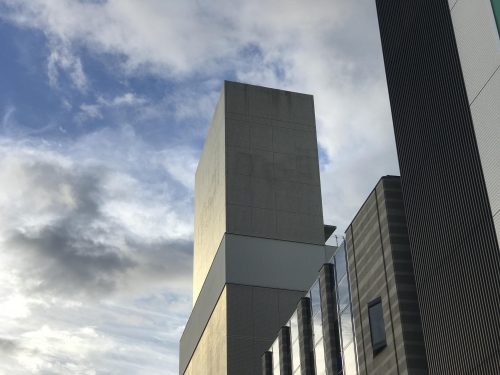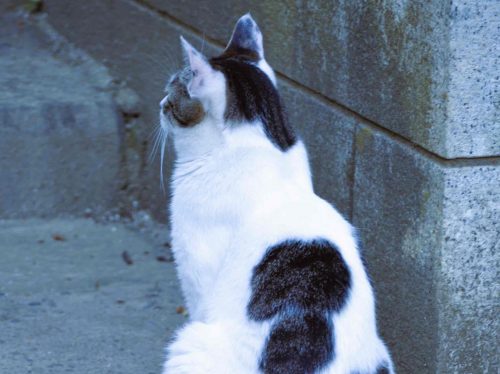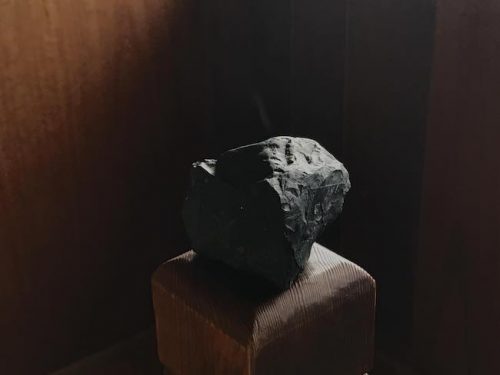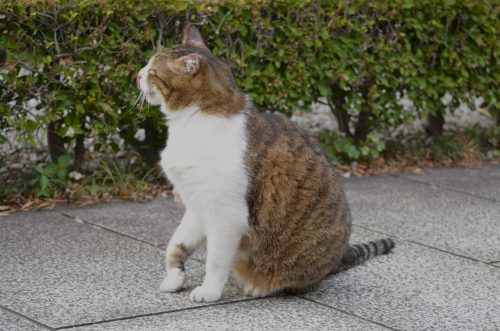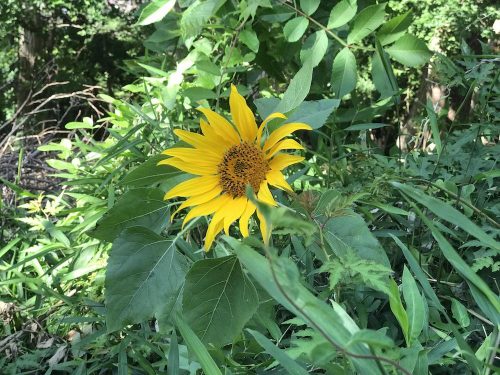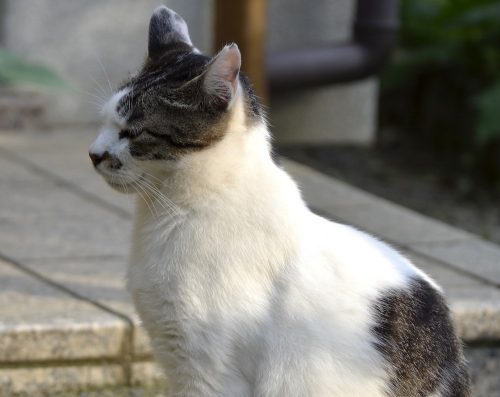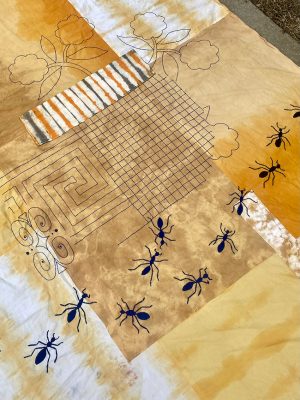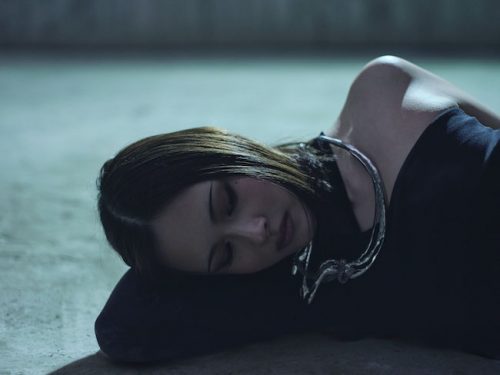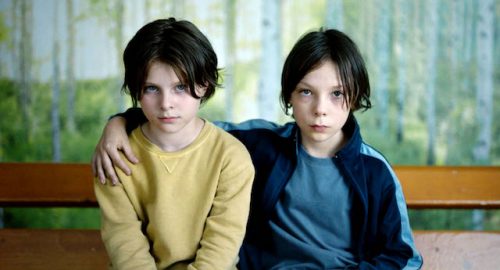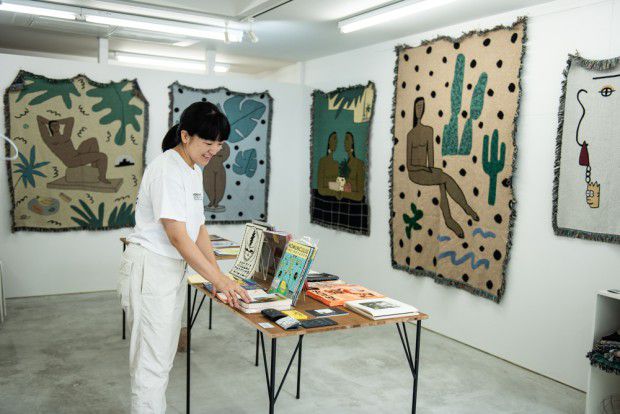
デジタル全盛期にもかかわらず、ここ数年かつてないほどの注目を集めているアートブックフェア。多くのパブリッシャーの中でも東海岸から西海岸、アジアに至るまでのフェアに参加し、幅広いネットワークで海外と日本のカルチャーを繋ぐ存在として知られるのがcommuneだ。出版とセレクトショップとしての機能から、2018年に再びギャラリーを併設する形で動き出したcommuneのMiyuki Kawabeに、その歴史とアンテナを磨く術を聞いた。
Despite it being the peak of the digital age, these past few years, the Art Book Fair has been receiving huge amounts of attention it had never been receiving before. Among the pressure, commune has participated in fairs from the east coast to the west, and even in Asia. It is known for connecting the cultures of Japan and overseas with its wide range of networks. From operating as a publishing label and a shop, in 2018 commune began moving forward with a plan to incorporate a gallery. Behind all of this was commune’s Miyuki Kawabe. We asked her about its history and her secrets to always being keen to opportunities for improvement.
— communeを語る上で、Miyukiさんの個人史は非常に重要だと思うので、そこから聞かせてください。そもそもどういう経緯でアートに携わるようになったんですか?
Miyuki「アートに触れたのは遅いのですが、小学生の頃から海外へ行きたいという気持ちはありました。両親が外国映画を観ているのを私もなんとなく眺めて育ったので、漠然とハリウッドの世界に憧れを抱いていて。あと、千葉の田舎で育ったのですがその環境をとても窮屈に感じていて、『とにかくここを出たい』という思いも強かったです。それで高校時代に、交換留学で1年間アメリカのジョージアに行ったんです。ホームステイをして現地の学校に通ったんですが、私が思い描いていたハリウッドの世界とは全く違っていて、むしろ地元と変わらない場所でした。なんとか英語を話せるようになって帰って来たけれど、『違った……』という思いが強くて(笑)。そのあと日本の大学に進んで、卒業する時期が就職氷河期で、文学部で手に職もない私を雇ってくれるところもなかったし、アメリカに語学留学に行って夜はグラフィックデザインのスクールに通おうと決めたんです。アートを気にしたり美術館へ足を運ぶようになったのはそこからですね。NYを選んで、現地についてからはFIT(Fashion Institute of Technology)やSVA(School of Visual Arts)の夜間コースの中から自分の好きなものをピックアップして1年間通いました」
–なぜグラフィックデザインを学ぼうと?
Miyuki「絵を描くことが好きだったし、CDのジャケットを見ることも好きだったので『こういうものが作れたらいいな』というところからですかね。友人の影響で洋楽も好きになって、大学4年の後半にインディペンデントのレコードレーベルでバイトしていたんです。最初は在庫整理の仕事だったけど、途中からIllustratorやPhotoshopの使い方を教わって手伝ったりしていて、それが面白かったというのもあります」
–NYでの授業はどんな内容でしたか?
Miyuki「グラフィックデザインはもちろんですが、写真や映像の編集も本当に色々学びました。でも当時は学費も全て自分で払っていて、本当にお金がなかった。日本レストランを経営している人にメニューのデザインを発注されて、ようやくなんとか生活できるようになって。でも相変わらず貧乏でしんどいし、冬も寒すぎて気も病んで『日本で普通にOLをやりたい』と思って、帰国して派遣で働いていたんです。そしたら音楽活動を始めた友人から『曽我部(恵一)さんのレーベルからデビューが決まったからバンドメンバーになってくれ』と言われて。”The Suzan”というバンドのキーボードとタンバリン担当になり、初めてライヴをしたのがQUATTROでした(笑)」
–I believe your personal background is very important in terms of discussing commune. How did you come to be involved in art in the first place?
Miyuki: “I was late on starting art, but I had the dream to go abroad since elementary school. I grew up mindlessly watching foreign films alongside my parents, so I vaguely adored the Hollywood scene. I also grew up in the suburbs of Chiba prefecture, and felt cramped in that kind of environment, so I had a strong desire to get out. Then in high school, I went to Georgia for a year through an exchange program. I did a homestay and commuted to the local school there, but it was completely different from the Hollywood scene I had pictured in my head, and rather, similar to my hometown. I had somehow managed to learn to speak English, but all I could think was, “It wasn’t what I wanted…” haha. After that, I went to a Japanese university, and the period when I graduated was an Ice Age for job recruits. There were no companies that would hire a literature major who had no skills like me, so I decided to do a language study in the U.S. and attend a graphic design school. I started to become mindful about art and visit museums from around that time. I picked New York, and took night classes at FIT (Fashion Institute of Technology) and SVA (School of Visual Arts). I was there for a year, picking and choosing classes that I liked.
–Why did you want to study graphic design?
Miyuki: “I liked to draw, and look at artwork on CD covers so I thought, “If only I could make something like this”. I started liking foreign music from my friend’s influence, and I worked part-time at an independent record label the latter half of my senior year in college. At first, I only organized stock, but as time went on I was taught how to use Illustrator and Photoshop to help out, and I thought that was interesting.”
–What were some of the materials of the courses you took in NY?
Miyuki: “Obviously graphic design, but I especially learned a lot on editing photos and videos. But since I paid for all my tuition back then, I really didn’t have any money. I was able to live off some money I made from designing a menu for a Japanese restaurant. But I was still broke and things were tough, winters were freezing and my spirits were down, so I thought, “I just want to be a OL (office lady) in Japan”, and returned home to work as a dispatch worker. Then, my friend who had just started making music came to me saying, “I got signed for a debut with Keiichi Sokabe’s label, join my band!” I became the keyboard and tambourine player of that band, later named “The Suzan”, and played my first live at SHIBUYA CLUB QUATTRO.”
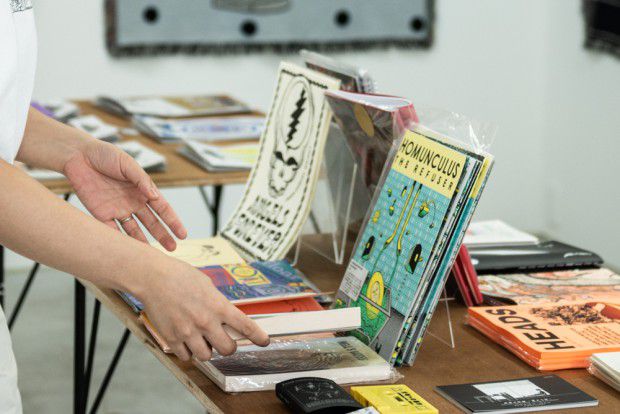
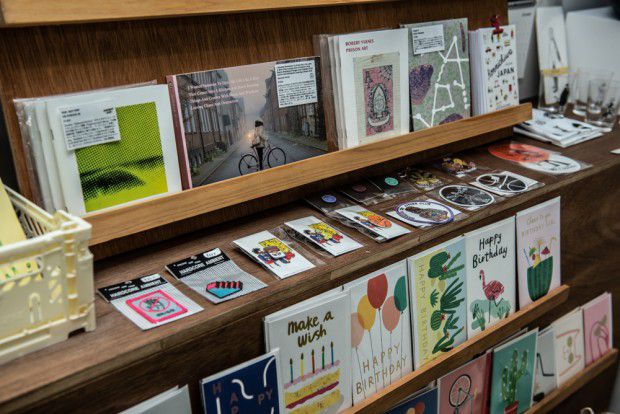
–The Suzanだったんですか! 伝説的バンドです、すごい。
Miyuki「それで派遣で働きながらバンドをやっていたら、人気が出てしまって。イギリスでライヴもやって、その時に仲良くなったThe WhipがPeter Bjorn and JohnにThe Suzanをオススメしてくれて、プロデューサーのBjornが曲を聴いて気に入ってくれたみたいで、バンドのMy spaceに『一緒にレコードを作りたい』とメッセージがきたんです。それでストックホルムに行ってレコーディングして。Bjorn は当時Kanye Westと仲が良く、その流れからKanyeのお抱えDJのA-Trakのレーベルからレコードを出そうということになって、アメリカデビューも決まりまして……とにかく色々なことが起こった1、2年でした(笑)。でも、その辺りで自分も結婚したことだし、メンバーは辞めてマネジメントに移行しようと決めて、2009~2011年くらいまでバンドのマネジメントをやっていました。そこからはアメリカのマネージャーに託して『暇になるな』と思っていた矢先にcommuneの話がきたんです。友達がギャラリーとしてcommuneを運営してたけど写真家としての創作に専念したいけど、建物の契約が半年残っているからその間やってくれないか、ということで。経験はないけれどやってみようかなと思って引き受けました。最初はギャラリーに人を呼ぶということが難しかったので、週に1度ほど知人のミュージシャンにライヴをやってもらったりして。そしたら人も来るようになったし、自分自身も楽しくなってきたので『半年でやめるのはもったいないな』と思い始め、新代田に新しく場所を見つけて再スタートしたという感じです」
–受け継いだ時にはもともとあったcommuneが基盤になっていたと思うのですが、具体的にはどのように変えていったんですか?
Miyuki「友人から引き継いだ時はギャラリーとはいっても、自らの企画も無く、いわゆる貸しスペースだったんです。新代田に移ってからも数年はその形態だったのですが、だんだんと『自分の好きなアーティストの展示をやりたい、海外の作家も呼びたい』という欲が出てきまして。アーティストを日本に呼ぶのに渡航費などがかかるので長く続けるのは難しいけど、半年くらいの期間限定でなら好きにやってもいいだろうと思い切って展示をやったりしていました。その展示期間は貸しスペースとしての収入は無いから不安も大きかったです」
–その当時関わったアーティストはどのようにピックアップしていたんですか?
Miyuki「前々から購入した本などを見て気になっていた人たちです。SSE Projectという韓国の出版レーベルが出しているアーティストたちがすごく良くて、そのレーベルからの影響は大きかったかな。zineや作品集を見て良いなと思ったので展示会を見るためにソウルまで行きました。その後メールで依頼して快諾してくれて、という流れで」
–You were a part of The Suzan! Such a legendary band, that’s amazing.
Miyuki: “As I did dispatch work and the band, it started becoming popular. We did a show in England, and The Whip, who we had gotten to know there recommended The Suzan to Peter Bjorn and John. The producer, Bjorn listened to our songs and seemed to like them, so he messaged the band’s Myspace saying, “I want to work with you.” We then went to Stockholm to record the album. Bjorn was close to Kanye West at the time, so we also received an offer from his DJ, A-Trak and his label to release an album with them, leading to a debut in America…There was a lot going on during those 1 or 2 years. However, I also got married around then, so I decided to quit the band as a member but do management for them. I was a manager from 2009-2011, then passed the role off to an American manager. Right when I was thinking I’d be left with a lot of free time, I received a talk about commune. My friend had operated commune as a gallery, but wanted to focus on her work as a photographer. The building’s lease went on for another half year, so she wanted me to be in charge of the gallery until then. I had no experience but decided to try because, why not, and agreed to it. It was difficult inviting people to come to the gallery at first, so I had a musician I knew hold a live there once a week. Then, people started coming, and I myself began to enjoy my job. I thought, “what a shame to quit after half a year” and found a new place in Shindaita to restart.”
–When you took on the place, I believe the original commune’s concept was the base, but how did you specifically change it to make it your own?
Miyuki: “When I took over, it was more of a rental space than a gallery, because we had no project of our own. Even after relocating to Shindaita, it remained like that but slowly, my desire to do exhibitions for the artists I liked, and invite foreign artists grew. Inviting artists to Japan meant paying for their travel expenses so I understood it was difficult to do it for long, but I figured I could do it for a limited time of around 6 months, and jumped at the opportunity. During the exhibition period, I had no income from the place as a rental space, so there was a lot of worry and uncertainty going into it.”
–How did you pick up the artists that you worked with then?
Miyuki: “They’re all people I had eyed from books I had bought before. The artists from SSE Project, a Korean production/publicshing label, were all great. I believe I was greatly influenced by that label. I discovered and liked them through zine and their books, so I went to Seoul to attend one of their artists’ exhibitions. After, I contacted the artist through email and he accepted.”
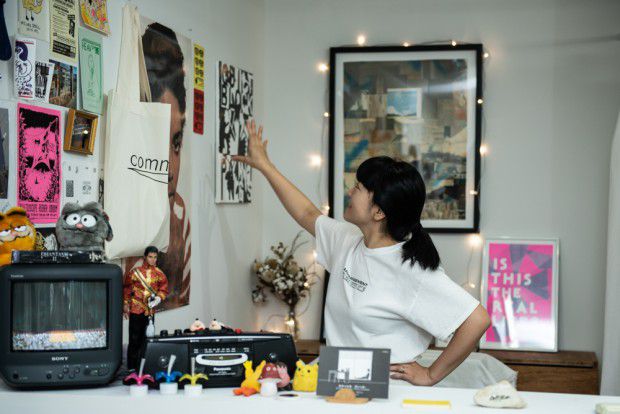
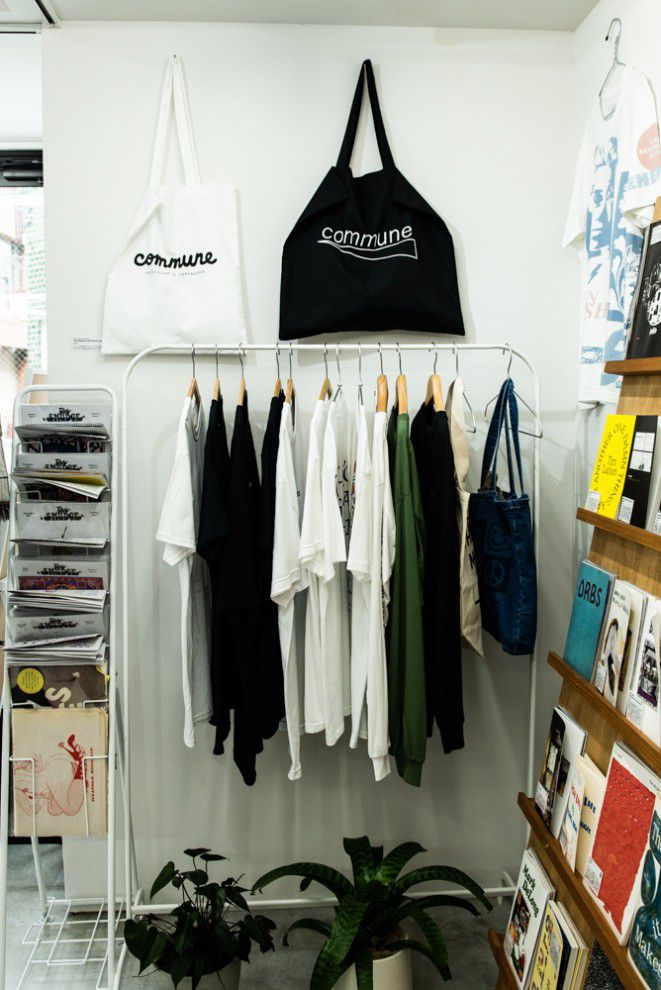
–うまくいっていた新代田のギャラリーを閉じたのは思い切った判断ですよね。
Miyuki「自分たちがやりたいアーティストをやり尽くした感があったし、繰り返すのも良くないと思ったんです。アーティストにとっても制作期間や旅行したりして吸収する時間があったほうが良いし、出版の方にも力を入れたいという思いもありました。それでオンラインだけという形態を6か月やって、お店があるとなかなか行けなかったNYとLAのアートブックフェアにも参加して。その時に自分が気になるものをいっぱい買ってきたのですが『これを自分たちだけが楽しむのはもったいない』という気持ちになってきたので、羽根木の小さいお店を週末だけという形でまた始めたんです」
— そのお店を3年やったのちに、今年またギャラリーをスタートされて。
Miyuki「色々なブックフェアに参加している3年の間に、アーティストやクリエイターチームから『日本で展示したい』という要望をたくさんもらったんです。それに応えたくて場所を借りて企画展をやったりしていたのですが、それもなかなかハードだったので自分でギャラリーをやろうと考えていたら、PADDLERS COFFEEの松島(大介)さんから今の場所を紹介されて即決しました」
–最近の幡ヶ谷の辺りはそういうクリエイティヴなネットワークが強い印象です。
Miyuki「PADDLERS COFFEEの機能は大きいと思います。そこに人が集まって、紹介しあったり」
–コーヒーを飲んで情報交換して、昔ながらのやり方での繋がり方。
Miyuki「そうなんです。みんなそういうことに興味がある人たちだし、全て自然な形で進むんです」
–It’s a brave move to close the gallery in Shindaita that was doing so well.
Miyuki: “It felt like we had already accomplished things with the artists that we wanted to at that time, and I felt like repeating it wouldn’t be so great either. Even for the artists, it’s better to have a period for creating artwork or traveling to gain ideas. I also wanted to focus more on publicshing. I tried it solely online for 6 months, and went to the Art Book Fairs in NY and LA, something I couldn’t do when I had my store. I brought back many things I was attracted to, but I started to think, “These books and zines are too good to enjoy only by ourselves!”, so I started a small shop in Hanegi, only open on the weekend.”
–After you ran that shop for 3 years, you started a gallery again this year.
Miyuki: “During those 3 years that I participated in various book fairs, I received many requests from artists and creators saying, “I want to do an exhibition in Japan”. I wanted to make those requests come to life, so I rented out several spaces that my good friends run and held exhibitions, but that became quite difficult. Right when I was thinking of having my own gallery, PADDLERS COFFEE’s Daisuke Matsushima showed me the place I have now, and I immediately made the decision.”
–I get the impression that there’s a strong creative network around Hatagaya these days.
Miyuki: “I believe PADDLERS COFFEE has a very prominent presence. People gather there, and introduce each other.”
–Drinking coffee, exchanging information, the old-fashioned way of making connections.
Miyuki: “That’s right. Everyone there is interested in that kind of stuff, and everything proceeds naturally.”
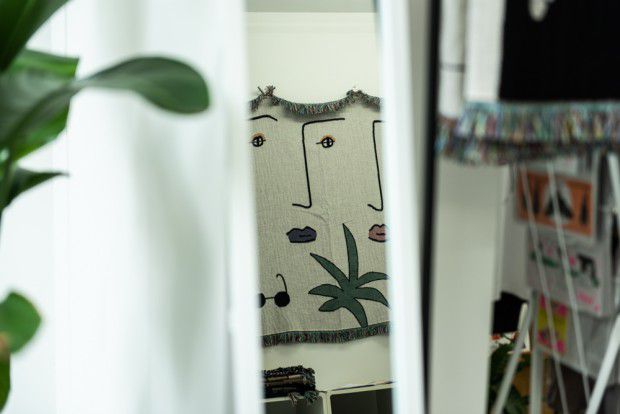
–アートブックフェアについても聞かせてください。今でこそアートブックフェアといえばcommuneというイメージですが、ちょっと前までは老舗が多く、今のように若い世代間に認知されていなかったですよね。Miyukiさんがそこに入って行こうと思ったきっかけは?
Miyuki「ギャラリーを運営する身として、若い世代にとっては作品を買いたいけれどハードルが高いんだなとは感じていて。でも図録やzineなら手が出せるかなと思い、展示を開催するたびにzineを作るようになり、zineやart bookの情報を集めていく過程でアートブックフェアが気になりだしました。そこからは韓国や台湾のzineシーンがアツいと視察に行きだしまして。初めの頃、アメリカの主要アートブックフェアの主催であるPrinted Matterの審査に通らなかったのですが、zineを色々作ったりしていたら逆に主催からInstagramでお声がかかるようになってブックフェアに呼ばれるようになりました」
–先日のNYアートブックフェアでは、ブース同士でやり取りして休憩しあって、“世界のご近所づきあい“をされているのが良い光景でした。
Miyuki「そうですね。逆にNYの方が東京よりも知り合いが多いし、やりやすくなりました(笑)」
–日本ではcommuneのような存在が若手のzineを活性化する呼び水になったと思うのですが、世界的にも盛り上がってきているなという流れを体感したのはどの時期ですか?
Miyuki「Printed MatterのLAアートブックフェアで何人かアーティストをフィーチャーしてブースを設けたり、Ace Hotelとコラボレーションしたりしていたのですが、そのなかのアーティストでCali Thornhill DeWittという人がいて。彼がKanyeのツアープロダクトを手掛けたことがインディペンデントのアートシーンにファッションシーンが食いついたきっかけとしては大きかったのかなと思います。それが2016年あたり。前々からそういう兆しはありましたが、そのことによって顕著に見えるようになったのではないでしょうか」
–ちなみにMiyukiさんがグッとくるアーティストのポイントは?
Miyuki「うーん……一目じゃ理解できないということかな。その後にどうしても気になってついつい調べるとやっぱりどこか日本にも通じている、みたいなことがあるんです。日本のアーティストや漫画が好きな人だったり。パッと見ではわからないけれど、どこか引っかかったのはもしかしたらどこかでその志向を感じていたのかもしれないというようなことです」
–直感は大事な部分だと思いますが、自分がきちんと「何か引っかかる」状態でいるためにやり続けていることやモチベーションになることはありますか?
Miyuki「情報を入れすぎちゃうと何も引っかかってこなくなっちゃう時があるので、そういう時は半日Netflix観たりしています(笑)。逆に何もしていないと不安なんですよ。でもブックフェアの前はすごくナーバスになりますね。自分たちが出版した本も売って、仕入れもしないといけないし、主人と二人で自分の売り場と仕入れのための視察とを交互にやっています。それぞれが見て回って、どれが良かったかをその場で意見交換をして交渉に行くんです。交渉のタイミングも大事だし、気もつかうのけど、アンテナは尖らせておかないといけないのでクタクタになります」
–リリースものとしてはデジタルな印象の作品よりもアナログ気質なものが多いのではと思うのですが、何か志向があるのでしょうか。
Miyuki「そう訊かれてみて思ったのですが、常にデジタルで発信している分、そうではないものに触れていたいという気持ちがありますね。印刷物をカッターで切ったり、自分の手を動かす作業をするようにしていると、自分が関わった自覚が持てるので愛情を持って作品の説明ができるんです。Zineのページの並びなんかも考えながらやらないと間違えちゃうし、パソコンで作る感覚とも違いますからね」
–最後に、海外のアーティストが絶大な信頼を寄せていることからも、“コミュニケーション”がcommuneを支える大きな要素だと感じているのですが、Miyukiさんがコミュニケーションの上で大切にしていることは何ですか?
Miyuki「なんだろうな。恐らく、中には言われたとおりに全てやっちゃうというか、物事を投げやりにしてしまう人もいると思うんですけれど、そうではなく、アーティストに対して自分なりの意見を率直に話して、アイデアを提案して、“一緒に作り上げたい”という姿勢を見せることだと思います。アーティスト側も言われて気づくこともありますしね。私たちは一度もアーティストがこうしたいということをそのまま鵜呑みにしたことはないです。提案型にすると、アーティスト側ももっと良くしたいという思いが強くなって、要望も増えてきますが、『次はこれがやりたい』と能動的に“次”を考えてくれるんです。自分もそれに120パーセントで応えていきたい。100ではなく、プラスアルファで返したいんです。せっかく日本人である私たちとやるからには日本で何か次の機会を掴んでほしい、拡がりを持ってほしいという気持ちでやっています。あと、損得は考えなくちゃいけないことだけど、考えすぎないようにしています。信頼の方が重要なんですよ。それは、自分がバンドをやっていた時の経験が元なんですよね。海外に行って、友達の友達とか、見ず知らずの人の家に泊めてもらったりしていて。そこで“信用する”から始まることが大事だとわかって。スウェーデンに行った時も、友達のお母さんの20年前のペンパルが泊めてくれたこともあって(笑)。最初こそ『知らない人だけど、大丈夫?』と思っていたけれど、泊めてもらったらすごく良くしてくれて大好きになったり。そういう経験があるから、疑ってかかるよりも自分の感覚を信じる、そして信用するというところから始めています」
–その姿勢がcommuneの居心地の良さに繋がっていると思います。今後の活動としてはどのようなものがありますか。
Miyuki「池野詩織さんの写真集をNYアートブックフェアで出して、その後日本で発売、10月に展示も行います。コンスタントに展示を行っているので、インスタなどでチェックしてみてください」
–Tell us about the Art Book Fair. Today, when you hear Art Book Fair, you inevitably think of commune, but it wasn’t long ago that there were long established stores, and the fair wasn’t known to the young generation like it is today. What made you want to enter such an environment?
Miyuki: “As someone who would be operating a gallery, I felt that although they wanted it, it was harder for the young generation to purchase artwork. I thought that it may be more accessible for them through catalogs or zine, so every time I held an exhibition I made a zine. As I collected information on zine and art books, I began gaining interest for the Art Book Fair. From there, I heard that Korea and Taiwan’s zine scene was hot, so I started going for inspection. In the beginning, I failed to pass Printed Matter’s standards, who is the host of the major Art Book Fairs in the United States, but as I was making zines I started receiving requests from the organizers on Instagram, and eventually got passed the selections for the book fairs or sometimes invited.”
–At the last NY Art Book Fair, it was a good scene seeing “international neighbors” conversing between booths and taking turns for breaks.
Miyuki: “Yes, indeed. I actually know more people in NY than Tokyo, so it’s gotten more comfortable.”
–In Japan, the presence of groups like commune has become a tool for activating young people’s zines, but when did you start to feel it booming internationally?
Miyuki: “I saw several artists got featured at Printed Matter’s LA/NY Art Book Fairs and they got special booths, and also collaborated with Ace Hotel. Among those artists, there was an artist named Cali Thornhill DeWitt. He collaborated with Kanye for his tour marchandize, and that not only helped his independent art scene, but also made the fashion scene cling on. This was around 2016. There were such signs from before, but I believe that was one of the remarkable moments.
–What are some of the traits of artists that really, blow you away?
Miyuki: “Hmm… probably the trait of not being able to understand at first glance. I’ll think about it after and inevitably look them up online, and find that there are certain things that translate for Japan too. It may be that they like Japanese artists or manga. Although you cannot tell at first glance, the reason why something bothered me may be because I felt such an intention.”
–I think your gut is an important part of it, but is there something you do regularly to be keen to what “bothers you”, or motivates you?
Miyuki: “There are times when I input too much information and nothing will bother me anymore, so during times like that I watch Netflix for half the day, haha. It actually worries me not doing anything. But, I get very nervous before book fairs. We have to sell books that we published ourselves, but also do buying for the shop. My husband and I take turns running our own selling booth, and going around to buy books. We each go around and see what was good, and discuss our opinions right there and then to go negotiate. The timing of negotiation is important as well. It requires a lot of effort to be mindful and polite, but also keen to the best opportunities. I’m always exhausted afterwards.”
–For just released items, it seems like there are more analog works than digital works, but perhaps there is an intention for that?
Miyuki: “I realized as you asked me, but since we are broadcasting digitally all the time, I do want to be more involved with things that aren’t. When you cut printed paper with a utility knife, or do tasks that involve you moving your hands, it makes you conscious that you were really involved in it, so I can explain it with an even greater feeling of love for the product. Even for zine layouts, I have to focus or I make mistakes. It’s different from making it on the computer.”
–Lastly, from all the foreign artists that trust you so deeply, I believe communication is a huge factor that supported commune. Is there something you cherish in terms of communication?
Miyuki: “I wonder what that would be. I think there are people who do everything the way they are told, or finish things just to get it over with. Instead of doing so, I think being honest and talking to the artist about our own opinions when suggesting an idea, and showing them that we want to “make this together” is the key. Sometimes the artist will notice things after hearing our your thoughts. We have never simply agreed to something an artist had wanted to do. When the project is based on suggestions, the artist grows the will to want to make it better, and with that comes more requests, but they begin to actively think about “the next time” we do a project. I want to answer those requests with 120 percent of my efforts. Not just 100 percent, because I want to give back even more. I do my work with the hope that since they are working with Japanese people, they will grasp another opportunity in Japan and spread further. Also, what you gain from it is something you have to think about, but I try not to think about it too much. The relationship of trust is more important. I know this from my experiences being in a band. I would go abroad and stay the night at my friend’s friend’s place, or someone’s that I barely knew. I realized then that there are things that begin by trusting. There was even a time when I went to Sweden, and my friend’s mother’s pen pal from 20 years ago hosted us for a month, haha. In the beginning, I would be skeptical and think, “I don’t know this person, but is it fine?” but as they let me stay over and were kind to me, I even got to love some of them. Because I had those experiences, I choose to trust, and to go with my gut feeling rather than being skeptical of everything.”
–I believe that connects to commune’s comfortable presence. Do you have anything planned for the near future?
Miyuki: “I’m presenting Shiori Ikeno’s photobook at the NY Art Book Fair, and after, will be releasing it in Japan and will also be holding an exhibition in October. We are constantly holding exhibitions, so please check them out on our Instagram.”
photography Sachiko Saito
text&edit Ryoko Kuwahara
commune
http://www.ccommunee.com
Instagram @ccommunee
東京都渋谷区西原1-18-7
Open 2-8PM(Weekday)、Noon-6PM(Sat/Sun) Closed(Wed/Thu)
有名無名問わず国内外のアーティストを紹介してきた新代田の「gallery commune」を2015年6月で閉鎖し、出版レーベル「commune Press」を運営。国内外で開催される展示のキュレーションなども手掛ける。2016年2月に、zineやアートブックに特化したセレクトショップをオープン。2018年、西原に移動し、セレクトショップ/ギャラリーを併設した形態で再始動。
Whether well-known or unknown, gallery commune in Shindaita introduced domestic and international artists. After closing former gallery commune in June of 2015, operated publicshing label commune Press. Also curates domestic and international exhibitions. In February 2016, opened a shop that features zines and art books. Relocated to Nishihara in 2018, and restarted as a shop/gallery in one.
